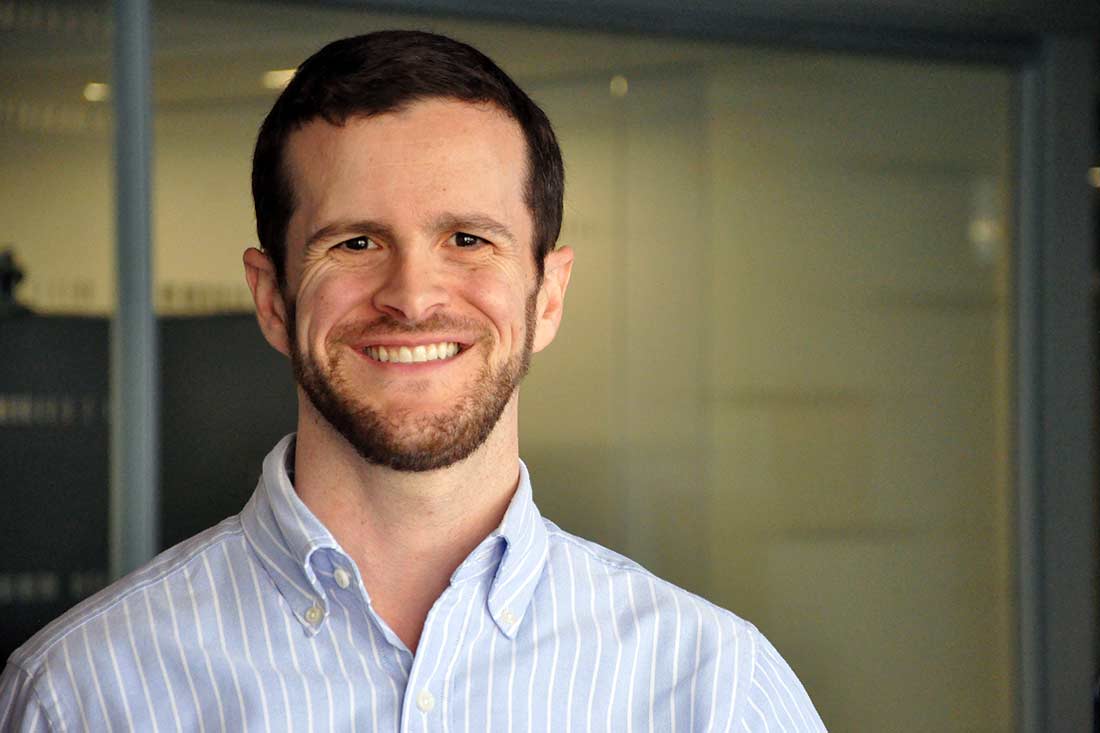- Resources
- CalSTRS says climate is major portfolio threat, companies must walk the walk on net-zero
Resources
CalSTRS says climate is major portfolio threat, companies must walk the walk on net-zero
Published: May 12, 2020 by EDF Staff
A few weeks ago, I spoke extensively with Brian Rice, a portfolio manager at California State Teachers’ Retirement Systems about key issues in environmental social and governance investing.
CalSTRS is the largest educator-only pension fund in the world with roughly $243 billion in managed assets. EDF has been working closely with the firm on corporate engagement for more than five years.
This is the first of a two-part Q&A series with CalSTRS examining prospects on ESG and climate investing through the energy transition. This portion of the discussion explores the rise of ESG, the importance of policy, and what comes next for companies with net-zero commitments.

Ben: CalSTRS has a long-standing commitment to climate. Why is it so important to your organization?
Brian: Climate has been a top priority for us for the past 15 years. We have integrated climate into our beliefs, policies, stewardship efforts and investments. Recently we realigned our focus to align with the ongoing transition to a low-carbon economy. We have spent a good amount of time working to understand what is driving the transition, its impact on investments, stewardship and engagement, and what we can do to drive the outcome we want.
We are invested everywhere and climate impacts our investments in so many ways — it is one of the biggest threats to our portfolio and arguably the biggest threat to our long-term portfolio value.
Ben: What is the most effective strategy CalSTRS uses to drive change?
Brian: Probably where we have been the most impactful is corporate engagement. You see initiatives, such as the Climate Action 100+, where many new companies are committing to significantly reducing emissions, which is encouraging. And net-zero by 2050 commitments are ramping up quickly among companies. Yet the process that gets these companies to achieve their goals remains to be seen.
Corporate engagement is critical to raise ambition, but policy is arguably even more important to support implementation of that ambition.
In all the years I’ve been doing this, two achievements have always stood out as the most important for climate — developing viable energy storage technology and implementing a meaningful price on carbon. We can support storage technology development and implementation through investments, but the price on carbon requires policy changes.

Ben: Have you observed changes in how the investment community views the importance of policy in solving climate change?
Brian: Yes, though I think it is manifested more regionally, given some frustration among investors who wonder how much policy change they can realistically make now at the federal level. I believe most investors understand the importance of policy and continue to fight, but many companies are just now gaining a better understanding of the role policy plays. For example, BP has been vocal about supporting policies, such as carbon pricing. But BP is the exception rather than the rule. Usually, when you start to push on companies directly and ask them to join in on initiatives to publicly advocate for carbon pricing policy, they back off.
Ben: How do you know if a company is walking the walk on supporting carbon pricing and other important policies?
Brian: Disclosure is obviously important, but what it comes down to is — are you willing to work with others in the financial community and share your policy vision publicly? And so few of the companies will do this. If you believe in a tax, make your commitment clear. Or work within your trade organizations to do so, but very few do.
Ben: Do you think companies in carbon intensive industries have a lot to fear from a carbon tax?
Brian: No. Because if it is rational and fair, everyone will bear a little bit of the cost. It doesn’t mean that one high-emitting company is going to bear the entire price. There are ways to understand how costs pass through the system and ways to alleviate costs that are too painful to bear for specific segments of society. Plus, a thoughtful carbon pricing regime can unlock benefits by making low carbon investment and innovation more attractive.
Ben: You mentioned BP earlier, which joined a wave of companies committing to net-zero by 2050 or sooner. How important is it for companies to set ambitious long-term targets, and what comes next?
Brian: The net-zero corporate trend is very important because it sends a message that the company takes climate seriously and it’s taking steps to change — but it’s just the first step. The commitment shows acceptance of the problem and acknowledges the company needs a radical transformation that is date certain. Yet as of now, there is a mutual understanding that we are all not quite sure how the company will accomplish the goal. For example, how much of carbon reduction will be made within operational emissions, product development, offsets, etc.? There are still many unknowns, but obviously the goal needs to be cemented. And from there, companies need to lay out a strategy of where they want to be in 12 months, two years, 10 years, etc. Investors are willing to give companies a bit of time to plan, maybe one or two years. But we need to see the game plan, the vision and objective, and clear steps to reach the goal. Interestingly, the short-term goals are the most ambiguous and where you see the most resistance.
Ben: I couldn’t agree more. My team recently conducted research in this area and found in the energy industry, the average CEO’s tenure is about five years — so 2050 is six CEOs from now! Is it necessary to set a science-based ambition for net-zero by mid-century? Yes, but that’s when the real work begins. It’s encouraging that investors like CalSTRS are digging in on much shorter-term targets and plans.
Do some investors still question getting returns in ESG investments?
Brian: Yes, but that is starting to change. Certainly, we’ve had success with our sustainability-themed investments. The market is somewhat flooded with offerings — what manager isn’t touting sustainability investments? But there is a big difference between a manager saying they integrate ESG risk consideration into their risk management and actually investing in ESG-themed securities.
From a fixed income perspective, I think green bond tends to be oversubscribed. I’m hearing managers with ESG portfolios are outperforming during this coronavirus crisis because the companies they invest in are sticky with people. If their customers want to sell something off, they tend to want to keep ESG investments, such as renewable energy projects. It’s changing, I see the changing landscape, but I hear the call that it needs to be happening faster.
Ben: Exactly. So we’ve talked a lot about industry and investors, but what is the perception of climate among your end customers, teachers?
Brian: I married into a family of public school teachers. My house on Thanksgiving is like a little CalSTRS convention. Granted, this perspective is not a scientific statistically sample set. But the bottom line is they all know and support what CalSTRS is doing around environment and climate change because of how we do it. It’s not about sacrificing returns, it’s about managing risk and taking advantage of opportunities. Every investment we do, we hold it up to the same standard as any non-climate investment — there is no discount or lower hurdle.
That’s why we’re focused on the low carbon economy transition — it’s happening and we need to recognize the drivers and outcomes and position for success.
Follow Ben on Twitter: @RatnerBen

